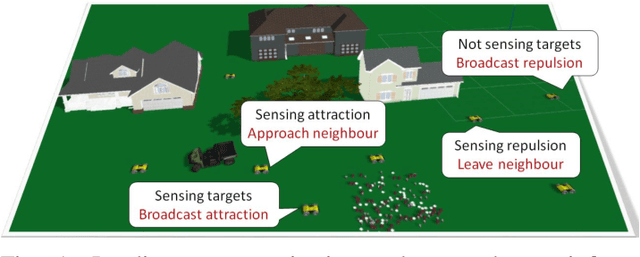Simple Swarm Foraging Algorithm Based on Gradient Computation
Paper and Code
Jun 17, 2019



Swarm foraging is a common test case application for multi-robot systems. In this paper we present a novel algorithm for controlling swarm robots with limited communication range and storage capacity to efficiently search for and retrieve targets within an unknown environment. In our approach, robots search using random walk and adjust their turn probability based on attraction and repulsion signals they sense from other robots. We compared our algorithm with five different variations reflecting absence or presence of attractive and/or repulsive communication signals. Our results show that best performance is achieved when both signals are used by robots for communication. Furthermore, we show through hardware experiments how the communication model we used in the simulation could be realized on real robots.
 Add to Chrome
Add to Chrome Add to Firefox
Add to Firefox Add to Edge
Add to Edge